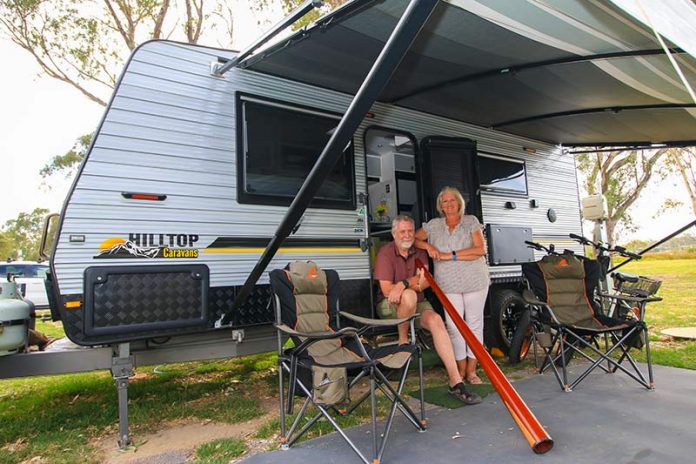So you’ve hitched your caravan and, five minutes down the road, you’re positive something isn’t right. The van is twitchy. It feels unstable. As a result, you’re clutching your steering wheel so tightly that your knuckles turn white. When you load a caravan, it’s important to get it right, lest this scenario happen to you.
Tip: if something doesn’t feel right as you’re towing your van, it probably isn’t. Continuing down the road, without attempting to resolve the issue, is the definition of ‘tempting fate’. You might be okay, but you might come a cropper. Why risk it, especially when many issues concerning towing dynamics can be fixed by adjusting the position of your payload?
In this article, we’ll look at some of the common mistakes that people make when they load a caravan. Many of you know this, so forgive me if you’re reading something you already know. If that’s the case, perhaps consider this your friendly reminder to pay attention to how you load your own getaway machine.
SUPPORTING THE LOAD
Have you ever noticed that the heaviest equipment in a caravan is almost always placed over the axle(s), the fridge in particular?
Think of a caravan as a see-saw, with the wheels as the fulcrum. A load placed over the fulcrum will be supported, with negligible impact on the see-saw – neither end will lower much, if at all.
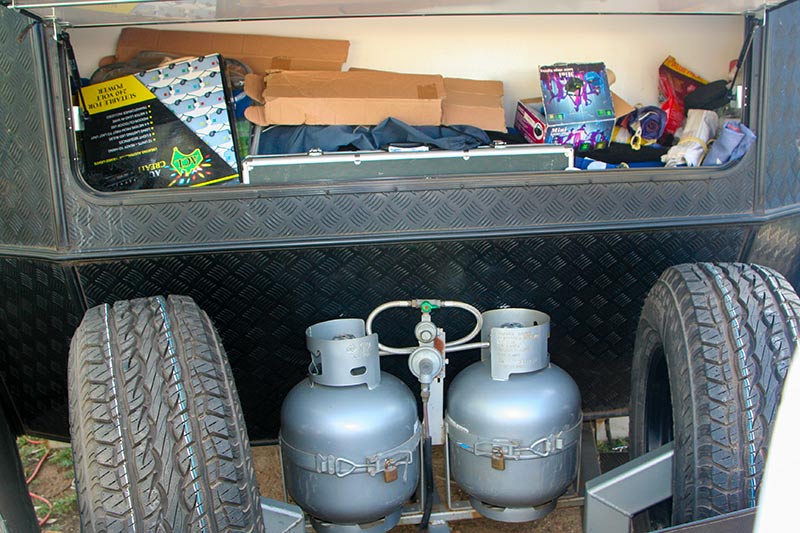
As more and more equipment is added, from the bed to the bathroom to the dinette, the ‘see-saw’ will want to teeter one way or the other. Of course, caravan manufacturers take this into account, designing their layouts such that the heaviest stuff is supported by the axles where it’ll have the least impact on the ball weight, with everything else positioned such that the vertical load imposed on the towball by the coupling – the ball weight – is suitable for that van in an unladen condition.
Towing the van behind a suitable vehicle in its unladen condition should, in a perfect world, therefore present no problems in terms of its towing performance (though I have certainly experienced exceptions). But when you start adding gear, water, clothes and food, there is the potential to throw this balance out of whack.
Let’s return to our see-saw analogy. Two people sit at the extreme ends, one person heavier than the other. Naturally, the heavier person will be at ground level while the other has their feet dangling in the air. But what happens if that heavier person moves closer towards the fulcrum? The see-saw begins to come back into balance.
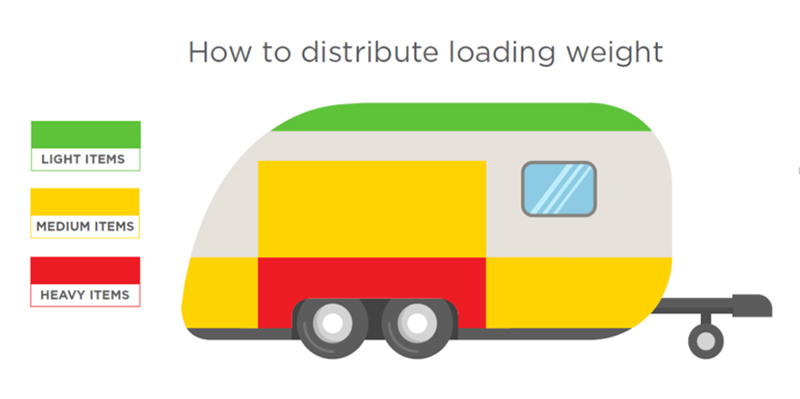
Therefore, the way to maintain balance when loading a van is to load closer to the fulcrum (the wheels), right? Yes, with some caveats.
Obviously, it is impossible to load everything over the wheels. That would be ridiculous, and that’s not how caravans are designed. They have boots intended to be filled with gear, from barbecues to generators.
But have you also noticed that these boots are always forward of the wheels? Sure, there will occasionally be rear cargo areas, but they are always much smaller spaces. There is method to this madness.
To be stable under tow, caravans have to be nose-heavy. By placing the majority of your payload forward of the wheels, inside the van’s boot, you’re ensuring that this weight will be supported by the towbar and tow vehicle.
If you were to load all your gear toward the rear of the van, what is there to support that weight or to counteract the sway that it might induce? Nothing. So when you’re towing the van along the freeway, with a certain amount of weight added to the rear of the fulcrum with nothing there to support it, it should not come as a surprise that the van feels twitchy or downright unsafe.
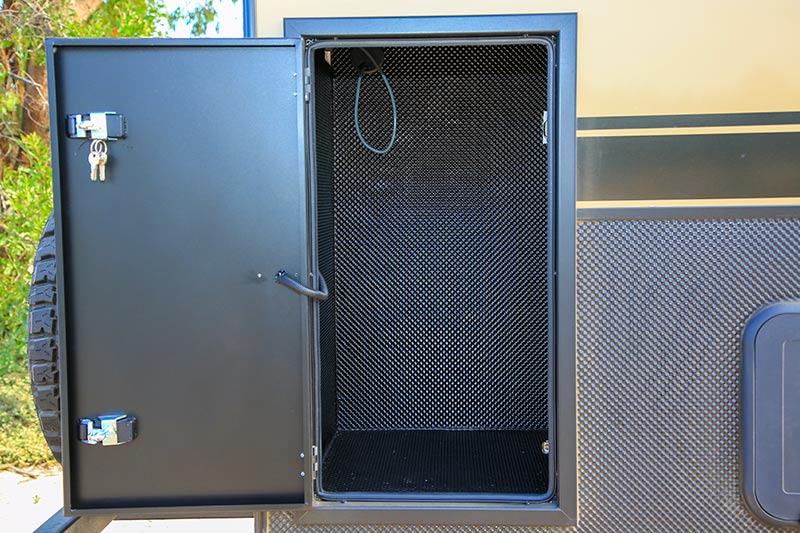
So the big question is, how should you load your caravan? Taking into account what we already know, that the manufacturer has designed the van in such a way that the heaviest items are over the axles with everything else located in a way that will impose sufficient weight on the towball, it makes sense to follow this approach. We are searching for the right amount of ball weight for your particular setup. The sweet spot.
Start by loading your heaviest items at ground level over the axle line to the extent that you can. Large containers of water, slabs of beer, and perhaps even things like portable lithium batteries. Your lighter items should be reserved for the overhead lockers.
Then, begin loading gradually towards the front of the van, again placing the heavier items closer to the axles.
I realise this all sounds good in theory. After all, there are only so many storage compartments inside a van positioned over or near the axles. However, I have on more than one occasion had to simply place some items on the floor of the van roughly over the axles. Not ideal, but doing this has helped me to achieve a balanced towing setup when one didn’t exist previously.
WATER WEIGHT
The location of your van’s water tanks plays a role in all of this. One litre of water weighs 1kg. That being the case, your caravan’s twin 100L water tanks when full add 200kg of payload to your setup when they’re full. No worries. The manufacturer should have accounted for that both in terms of the van’s payload capacity and how those full tanks will affect the van’s ball weight. And in theory, that’s true. In theory.
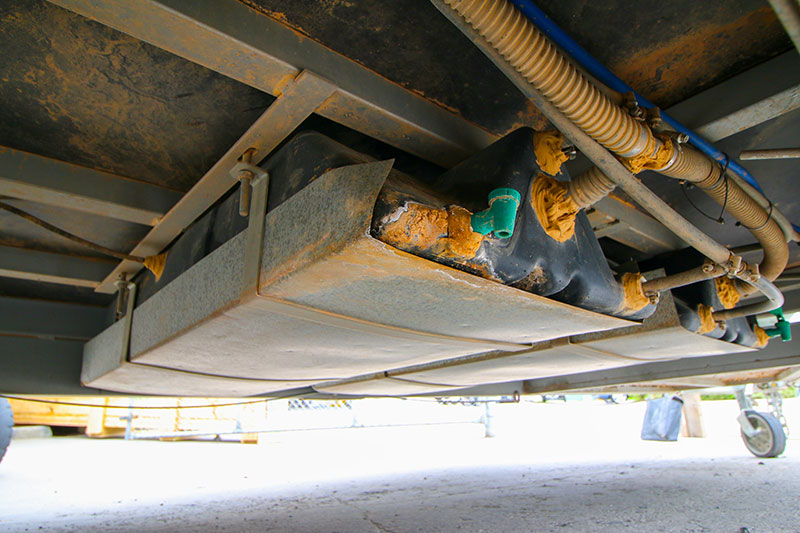
But how many vans have you seen with two 100-plus litre water tanks forward of the axles, with some tanks positioned quite close to the A-frame? I’ve seen plenty. The trouble is, by adding 200kg of water forward of the axles, towards the end of the chassis, that weight has an impact on the van’s ball weight. And so, when you’re also adding gear to the van, loading the heavy stuff over the axles and then gradually towards the front, you might begin maxing out the tow vehicle’s towball capacity.
I once conducted a test in which I filled two 100L water tanks that were quite far forward of the axles. The unladen ball weight was 155kg. After adding the water, the ball weight was 233kg – a 78kg increase! Given the van’s ATM of 3000kg, likely meaning it would be towed by a vehicle with a 300kg maximum towball mass, that left only 67kg to account for luggage, gas in the cylinders, etc.
Was this a flawed caravan design? In my opinion, yes. It left the owner with no choice but to place almost everything above the axle line, where it would have least impact on ball weight. Had the water tanks, however, been placed closer to the axles – remembering our see-saw analogy – the impact on ball weight would have been negligible, providing the owner with more scope to load their van appropriately.
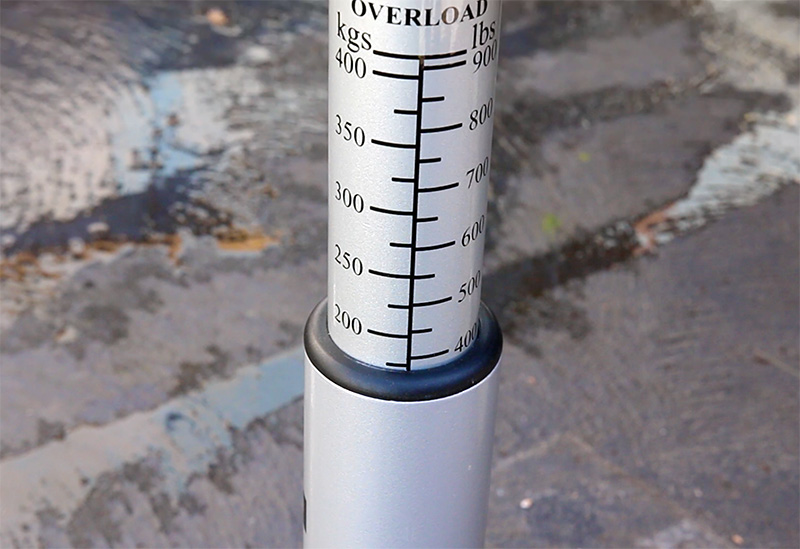
I am not saying that all caravans with water tanks positioned forward of the axles are a flawed design. The one detailed above was, in my opinion, but I don’t intend that as a blanket statement. It is quite possible to have a couple of water tanks mounted forward of, but still quite close to, the axles without them contributing inordinately to the ball weight. But the contribution to the van’s ball weight by the water in the tanks is something to think about as you load your caravan.
Another factor is the location of the axles in relation to the chassis. I was chatting with GoRV tech and gadget guru, Marty Ledwich, on this topic. He made a useful observation: “When measuring the weight of vans, we found that the best-balanced vans had their axles slightly rearward of the centre of the chassis. This assisted with leverage and lessened the overall impact of water weight on the towball. Of course, this too is a fine balance. Go too far to the rear, and you create too much weight on the front overall and on the towball as well.”
All of this is a long way of saying that nothing is a given when it comes to loading your van. There is no one, exact right way, only the guiding principle outlined above.
LOAD A CARAVAN: IN PRACTICE
Back to our initial scenario. You’re towing the van along the highway and it feels twitchy, as though it’ll pick up a gut-wrenching sway at any moment. The first thing to do is to pull over and assess how you’ve loaded the van.
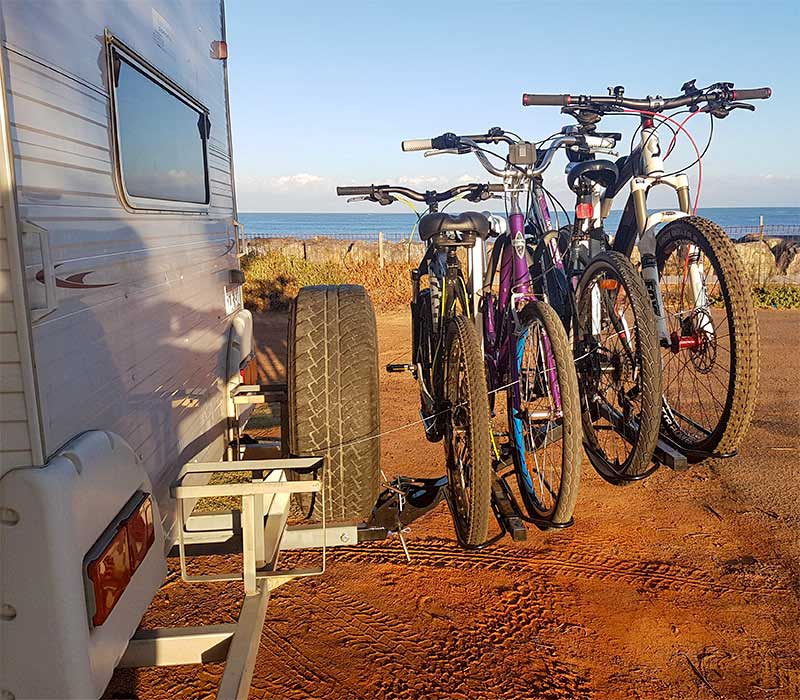
Anything with a bit of heft to it that’s located to the rear of the van must be moved over the axles and/or gradually towards the front. Remember, the vertical force of the weight of that rearward cargo is not being supported by anything (other than the chassis, of course), and it’s levering the towball weight upwards, off the towbar. So let’s shift that payload to where it will be properly supported and won’t cause the tail to wag the dog.
Take your van for another tow. Has that helped? If not, it could be that your van still has insufficient ball weight. Try shifting some gear a little further forward, perhaps moving some into the tunnel boot.
This is something of a dark art. Again, there’s no hard and fast rule beyond what I have described. It’s a controlled trial-and-error situation.
If the van still feels twitchy after you’ve shifted your payload accordingly, there is probably one of a number of other things going on. It could be that your tow vehicle simply lacks the overall mass and wheelbase to adequately shoulder the load of your van (despite its rated towing capacity), or it could be that the van needs a wheel alignment, or perhaps that twitchy feeling is being caused by water sloshing around your half-filled tanks (unlikely, but try filling them to the brim). If in doubt, I highly recommend speaking to a specialist, someone who can physically inspect your towing setup and offer the solution.
My final word of advice is also a word of caution: as you adjust your payload so that it sits over the axles and gradually towards the front in an effort to reduce sway, keep a weather eye on the ball weight, especially if your water tanks are full. Ultimately, how you load your van will affect the weight imposed on the towbar via the coupling, and you exceed that at your own peril. Oh, and never exceed your van’s ATM… but that really should go without saying!


